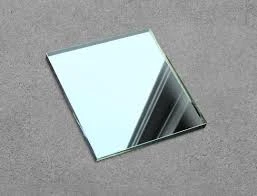

The Allure of Dark Gray Reflective Glass
In contemporary architecture and design, materials play a pivotal role in defining aesthetics, functionality, and sustainability. Among these materials, dark gray reflective glass has emerged as a favored choice, captivating architects and designers alike with its unique characteristics. This article explores the distinct qualities and applications of dark gray reflective glass, illuminating its role in modern spaces.
Dark gray reflective glass possesses a striking appearance that seamlessly blends modernity with elegance. Its deep hue offers a sophisticated aesthetic that complements a wide range of building styles, from minimalist to industrial. The reflective quality of the glass enhances its visual appeal, allowing it to interact dynamically with its surroundings. By reflecting natural light and the environment, dark gray reflective glass creates a stunning play of light and shadow, transforming the facade of buildings into living art.
One of the most compelling features of dark gray reflective glass is its ability to enhance privacy without sacrificing natural light. In urban settings where space is often limited, this glass provides an effective solution for commercial and residential buildings alike. Individuals inside can enjoy unobstructed views of the skyline while passersby outside are given only a glimpse of the interior, maintaining a sense of intimacy and security. This balance of transparency and reflection makes dark gray reflective glass especially attractive for office buildings, luxury apartments, and high-end retail spaces.

In addition to its aesthetic and privacy benefits, dark gray reflective glass contributes to energy efficiency. By reflecting a significant amount of solar radiation, it helps to regulate indoor temperatures, reducing the reliance on air conditioning systems. This property not only minimizes energy consumption but also lowers utility costs, providing an economic advantage to property owners. As the world moves toward sustainable practices, the demand for materials that aid in energy efficiency continues to rise, making dark gray reflective glass a smart choice for eco-conscious builders and developers.
The versatility of dark gray reflective glass extends beyond its architectural applications. In interior design, it can be utilized in a variety of ways, from large windows and curtain walls to decorative partitions and mirrors. When incorporated into interior spaces, it creates a sense of depth and sophistication, reflecting ambient light and enhancing the overall mood of a room. Furthermore, its durability and resistance to weather elements make it an ideal choice for outdoor installations, such as balconies, patios, and canopies, maintaining its striking appearance over time.
However, while dark gray reflective glass offers numerous benefits, it is essential to consider its potential downsides. The reflective nature of the glass can create glare, both for people inside the building and for pedestrians outside. Architects and designers must carefully plan the orientation and placement of the glass to mitigate this issue and ensure a comfortable experience for users. Advances in glass technology have led to the development of low-glare options, allowing for greater flexibility in design without compromising on comfort.
In conclusion, dark gray reflective glass is a material that embodies the essence of modern design. Its combination of aesthetic beauty, privacy, energy efficiency, and versatility makes it a powerful tool in the hands of architects and interior designers. As we continue to redefine our built environment, embracing innovative materials like dark gray reflective glass will not only enhance our spaces but also contribute to a more sustainable and harmonious future. Whether adorning a sleek skyscraper or adding elegance to a private residence, this remarkable material is destined to leave a lasting impression on both the landscape and the hearts of those who inhabit it.